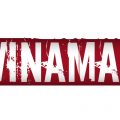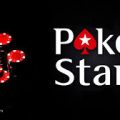
Online MIT Course Teaches Poker Theory for Free

Kevin Desmond’s class on poker theory, taught at MIT in January, is now available for free online. (Image: MIT)
Have you ever wished you could pick up a poker major at your local university?
That’s still an unlikely dream, but there is at least one course on poker that is now open to everyone in the world, as long as they’re willing to put in the time to listen to the lectures and do the coursework.
Poker Theory and Analytics, a course taught at the Sloan School of Management at the Massachusetts Institute of Technology (MIT), is now available in its entirety online.
The online version of the class includes a series of eight video lectures, as well as assignments, lecture notes and additional insights from the instructor, Kevin Desmond.
Course Teaches Basic Strategy, Advanced Analytical Skills
The course starts out by teaching players the basics of poker, including some introductory strategy and basic terms like expected value.
The material does get more advanced as the course proceeds; there is plenty of instruction that would be great for experienced poker players who haven’t explored the more analytical side of the game.
If you’re wondering why MIT would want to have a course on poker alongside courses on management, computer programming and artificial intelligence, the answer appears to have to do with the way poker players think.
The idea is that poker provides insight into risk management and analysis skills that could then translate over to the world of investment banking, allowing students to simultaneously improve their chances on the felt and on Wall Street.
The live version of the class was taught beginning in January, and came with a few perks that you won’t find in the online video class.
For instance, students were able to play in private poker tournaments on PokerStars.net as part of their coursework, and even competed in a live tournament at the end of the class in an attempt to win prizes like an iPad Air.
OCW Program Brings Most MIT Classes Online
The course is provided online through the MIT OpenCourseWare (OCW) program.
OCW is part of a growing movement from some elite universities that has seen thousands of courses placed online, where individuals from around the world can enjoy them without paying tuition prices that have become increasingly unaffordable for many.
According to the OCW website, materials from 2,260 MIT courses are available, and have been viewed by 175 million visitors. That includes “virtually all MIT course content,” with some of the most popular courses including Introduction to Computer Science and Programming, Linear Algebra, and Single Variable Calculus.
Those classes may seem like more traditional college fare, but the introduction of a poker place didn’t come completely out of nowhere for MIT.
Poker has increasingly been seen as a teaching tool at many high schools and universities, and the school has a bit of a history when it comes to successful gamblers with a deep theoretical understanding of casino games.
That, of course, refers to the infamous MIT Blackjack Team, a group that used card counting techniques and some more elaborate methods to score big wins at a number of casinos over the course of decades.
While most media depictions of the group (including the book Bringing Down the House) offered highly fictionalized accounts of their activities, the group was very real, and helped lead casinos to introduce conditions (such as automatic shufflers) designed to combat card counting.















0 Comments